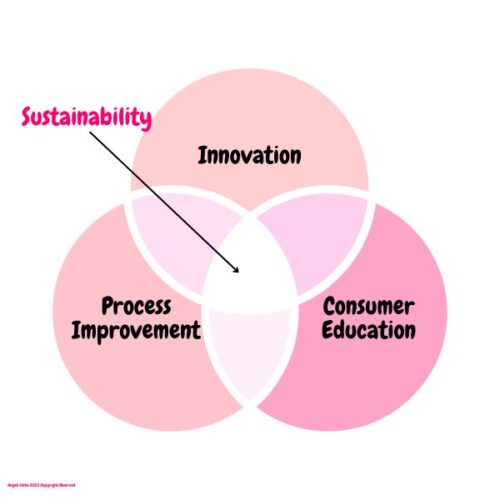Like all industries, the beauty industry is afflicted with the malady of “what’s next?”
Keeping abreast of these trends/fads/whiffs of smoke sometimes feels like having my teeth pulled out (slowly, without anaesthesia). I (almost) regret my decision to leave tax.
I am kidding
Fly-on-the wall perspective…
Jokes aside, as an outsider in the beauty industry, I have a fly-on-the-wall perspective of current events.
For example, “sustainability” is a hot and trending topic, which for normal human beings – the wildfires in Canada, Hawaii and the extreme summer of Europe (aka global warming), you can always turn to TikTok’s trending hashtags like “#nontoxicbeauty,” “#ecobeauty,” and “#zerowastebeauty” to prove extreme interest in inter alia “sustainability.”
How does the “what next?” trend become part of the skincare industry?
My twopence are that this happens in two ways:
it becomes part of some extra marketing claim. (e.g.) reef safe sunscreens can and do contain the bad boys’ Octocrylene, Oxybenzone, etc. Trends create exaggerated claims that bear little resemblance to reality and are often confusing for consumers
they create new growth in areas of the market (e.g.) an uncontroversial example would be colour cosmetics for women of colour, gender-neutral skincare, etc
The structural nature of trends favours incumbents, who (e.g.) with their big factories and R&D depts rarely do anything new or that afflicts their bottom line.
when I read about “sustainability” and how the beauty industry has to pull up its socks from the proverbial fence, I do wonder if anything will ever (truly change)
My main gripe…
My main gripe (yes, I am just coming to it) is that we always look at trends in silos.
Making every industry on this planet more sustainable should be an absolute priority for every single business that turns a profit.
You cannot sell products to people fighting heatwaves or struggling for survival – there is your profit motive. But even before that, we must look at the most straightforward fixes
Examples of how this can happen
Process improvements: How can the manufacturing processes reduce water use? If you are shocked at how much water is involved in manufacturing one T-shirt, you should similarly be concerned at how much water is involved in beauty manufacturing
Ban single-use products that do not come in recyclable material
Educate consumers: Even if products can be recycled, the vast number of beauty products that end up in landfills yearly is disturbing. We need to make it easier for consumers to not only buy our products BUT dispose of them. If they don’t like (e.g.) nail polish, there has to be an easily accessible recycling solution for the product, its container and brush.
Carry out more research on controversial ingredients that should be more closely regulated, not just from a human perspective but from an environmental perspective.
I am not saying we don’t do this – but we need to do more
Sustainability is not a trend; it has to change how beauty products are made and consumed. Period.
We have to do our bit to reduce the impact of climate change.
